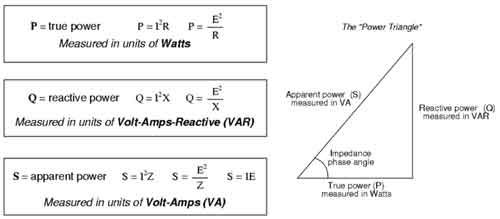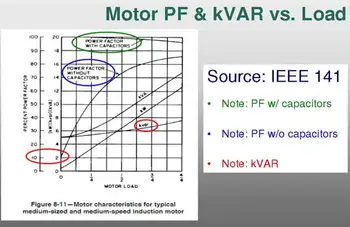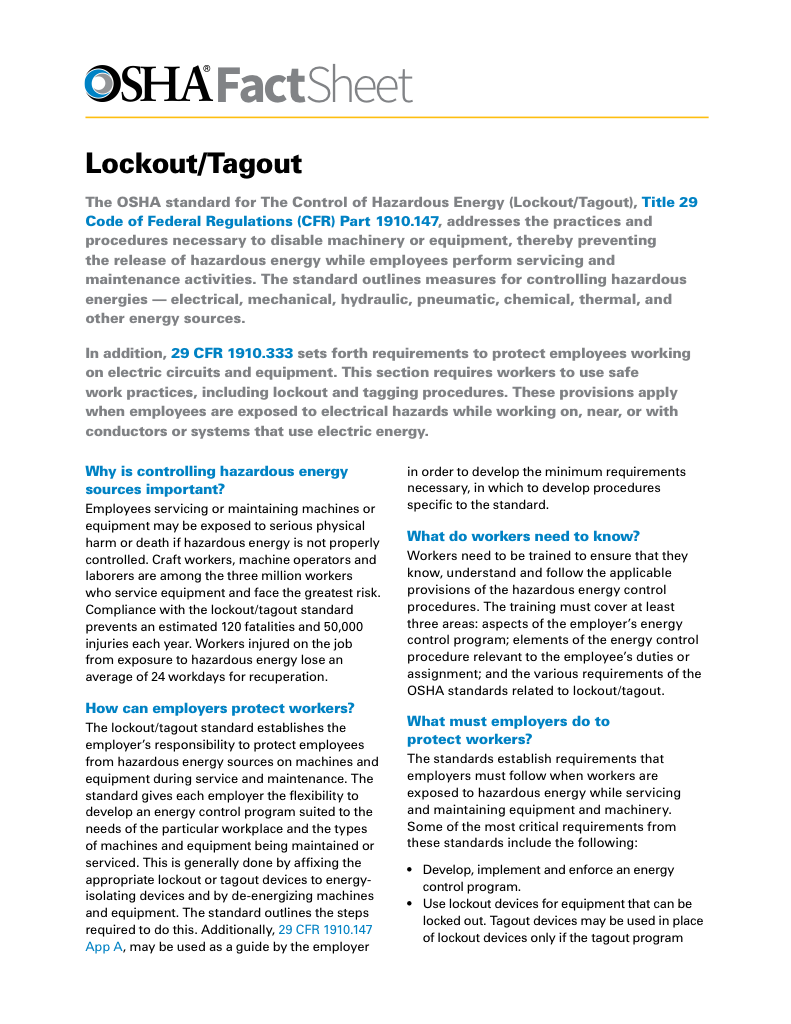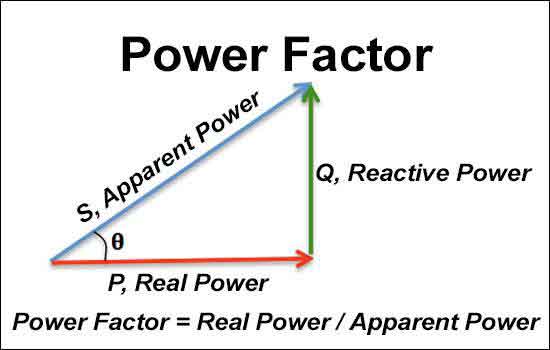Apparent Power vs Real Power

Power Factor Training
Our customized live online or in‑person group training can be delivered to your staff at your location.

- Live Online
- 6 hours Instructor-led
- Group Training Available
Download Our OSHA FS3529 Fact Sheet – Lockout/Tagout Safety Procedures

- Learn how to disable machines and isolate energy sources safely
- Follow OSHA guidelines for developing energy control programs
- Protect workers with proper lockout devices and annual inspections
Apparent power vs real power explains the difference between total power in an AC circuit and the actual usable power. Understanding this relationship helps improve efficiency, correct power factor, and reduce energy losses.
What is Apparent Power vs Real Power?
Apparent power (S) vs real power (P) describes how electrical energy is measured in AC systems:
✅ Apparent power (VA) is the total energy supplied, combining real and reactive components
✅ Real power (W) is the actual usable energy consumed by loads
✅ The difference is caused by reactive power, impacting efficiency and PF
Apparent power vs real power are fundamental concepts in electrical systems, especially in AC circuits. Apparent power (S), measured in volt-amperes (VA), is the total energy flowing in a circuit, while P, measured in watts (W), is the actual usable energy that performs work, such as lighting or running a motor. The key difference between the two lies in the presence of reactive power (Q), which does not contribute to real work but still affects the total power required. A deeper explanation of apparent power (S) is provided in our Apparent Power article, which covers its role in AC circuits.
Understanding the distinction between apparent and P is crucial for optimizing energy efficiency and minimizing waste in electrical systems. If you need practical calculations, our Apparent Power Calculator and Apparent Power Formula pages provide step-by-step methods.
Power Quality Analysis Training
Request a Free Power Quality Training Quotation
In AC electrical systems, complex power is expressed as the combination of active power and Q, showing how energy is both consumed and exchanged within the circuit. Devices such as capacitors and inductors generate Q, creating a shift in the phase angle between voltage and current. This relationship highlights the distinction between reactive and S, where S represents the total demand on the system. Mathematically, S is the vector sum of active and reactive components, measured in volt-amperes (VA), while Q is expressed in volt-amperes reactive (VAR).
Sign Up for Electricity Forum’s Power Quality Newsletter
Stay informed with our FREE Power Quality Newsletter — get the latest news, breakthrough technologies, and expert insights, delivered straight to your inbox.
Active, Reactive, and Complex Power
In AC systems, complex power (S) is expressed as the sum of real power (P) and reactive power (Q):
S = P + jQ
-
Real power (P) = V × I × cos φ, measured in watts (W or kW)
-
Reactive power (Q) = V × I × sin φ, measured in volt ampere reactive (VAR or kVAR)
-
Apparent power (S) = V × I, measured in volt-amperes (VA or kVA)
Here φ (phi) represents the phase angle between voltage and current. The cosine of φ (cos φ) is the PF, while sine of φ (sin φ) determines the reactive portion. This breakdown shows why systems with inductors or capacitors generate Q and why utilities must size equipment for S, not just P.
The Power Triangle
The power triangle illustrates the relationship between apparent, real, and Q.
-
The horizontal axis represents real power (P).
-
The vertical axis represents reactive power (Q).
-
The hypotenuse represents apparent power (S).
Mathematically: S² = P² + Q²
This visualization makes it clear that S is the vector sum of real and reactive components. It also helps in transformer and generator sizing, since equipment must handle S even though only P performs useful work.
Think of it like a beer mug: the beer you drink is P, the foam on top is Q, and the total glass volume is S. The foam doesn’t quench your thirst, but the mug still has to hold it.
Apparent Power vs Real Power Comparison
| Aspect | Apparent Power (S) | Real Power (P) |
|---|---|---|
| Definition | Total energy supplied to an AC circuit, including real and reactive components | Usable energy consumed by the load to perform actual work |
| Unit of Measurement | Volt-Amperes (VA) | Watts (W) |
| Formula | S = V × I | P = V × I × PF |
| Role in System | Represents overall demand placed on the source | Represents the portion of energy converted into useful output |
| Efficiency Impact | Higher than P when Q is present, lowering efficiency | Indicates true efficiency of energy use |
| Examples | Includes both lighting and reactive effects of motors or transformers | Powers devices like lights, heaters, and motors doing useful work |
| Relation to PF | Always equal to or greater than P, depending on phase angle | Always less than or equal to S; increases when PF improves |
Frequently Asked Questions
What is the difference between S and P?
AP refers to the total electrical energy supplied, combining both usable and non-usable energy components. RP is the actual energy consumed by devices to perform useful work.
To better understand the overall context, see our Power Quality guide, which explains how apparent and P affect efficiency and system performance.
Why is AP higher than P in some electrical systems?
The presence of Q, caused by inductive or capacitive loads, creates a phase shift between current and voltage, increasing S without raising P. This is why utilities emphasize PF correction using devices like an Automatic Power Factor Controller, as it works in real applications.
How do you calculate S and P in an AC circuit?
-
Real power (P) = V × I × cos φ
-
Apparent power (S) = V × I
-
Reactive power (Q) = V × I × sin φ
In a purely resistive load, cos φ = 1, meaning real and S are equal.
What is the relationship between S, P, and Q?
They form the power triangle, with S² = P² + Q². The cosine of the phase angle (cos φ) is the PF, showing how efficiently a system converts apparent into P.
Why is it important to improve the ratio of P to S?
Improving this ratio (PF) means greater efficiency, smaller load sizing, lower energy bills, and reduced strain on the grid. Utilities may penalize low PF because infrastructure must be designed for S. Learn more in our How to Calculate Power Factor guide.
What’s the difference between leading and lagging PF?
A lagging PF occurs in inductive loads (motors, transformers), while a leading PF is caused by capacitive loads. Both reduce efficiency, but correction methods differ.
How are PF correction capacitors sized?
Capacitors are rated in kVAR and chosen to offset the system’s reactive demand. By reducing Q, they bring S closer to P, improving overall performance.
Why It Matters
In an AC system, understanding the relationship between apparent, real, and Q is vital for optimizing energy use. By calculating these values and improving the PF, facilities can enhance efficiency, lower costs, and ensure smoother, more reliable performance. For deeper insights, see how Power Factor Correction reduces reactive losses and strengthens the link between apparent and P.
FREE EF Electrical Training Catalog
Download our FREE Electrical Training Catalog and explore a full range of expert-led electrical training courses.

- Live online and in-person courses available
- Real-time instruction with Q&A from industry experts
- Flexible scheduling for your convenience







